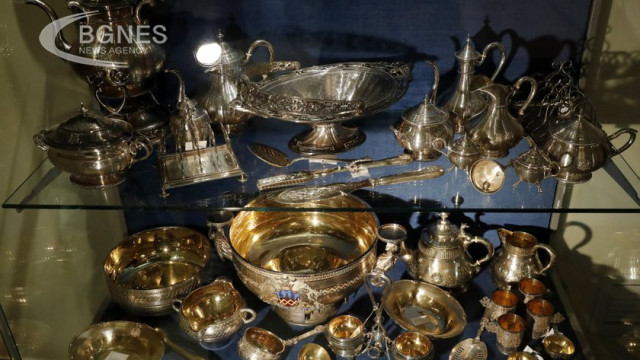Among the cache of gleaming gold treasures from the Iberian Peninsula's Bronze Age, a pair of corroded objects are perhaps the most precious of all.
Researchers have found that a matte bracelet and a rusty hollow hemisphere decorated with gold were forged not from metal from the earth, but from iron from meteorites that fell from the sky, Science alert reported.
The discovery, led by now-retired head of conservation at Spain's National Archaeological Museum Salvador Rovira-Llorens, suggests that technology and metalworking techniques were much more advanced than we thought in Iberia more than 3,000 years ago years.
The Treasure of Villena, as the find of 66 mostly gold objects is known, was discovered more than 60 years ago in 1963 in what is now Alicante in Spain, and has since been considered one of the most important examples of Iberian Bronze Age goldsmithing. peninsula and throughout Europe.
Determining the age of the collection is somewhat difficult, however, thanks to two items: a small hollow hemisphere believed to be part of a scepter or sword hilt, and a bracelet resembling a torc. Both have what archaeologists describe as an "iron" appearance - ie. they appear to be made of iron.
In the Iberian Peninsula, the Iron Age, when molten earth iron began to replace bronze, did not begin until about 850 BC. The problem is that the gold materials are dated between 1500 and 1200 BC. So the placement of the iron-looking artefacts in the context of the Vilena hoard is a mystery.
But iron ore from the earth's crust is not the only source of iron. There are a number of pre-Iron Age iron artifacts around the world that have been forged from meteorite material. Perhaps the most famous is the pharaoh Tutankhamun's meteorite iron dagger, but there are other Bronze Age weapons made of this material, and they were very highly valued.
There is a way to tell the difference: iron from meteorites has a much higher nickel content than iron mined from the Earth's surface. Therefore, the researchers obtained permission from the Municipal Archaeological Museum in Vilna, where the collection is kept, to carefully test the two artifacts and determine how much nickel they contain.
They carefully sampled both artifacts and subjected the material to mass spectrometry to determine their composition. Despite the high degree of corrosion that changes the elemental composition of the artifact, the results strongly indicate that both the hemisphere and the bracelet are made of meteoritic iron.
This resolves the dilemma of how the two artifacts fit with the rest of the collection: they were made during the same period, dating from around 1400-1200 BC.
Because the objects are heavily corroded, the results are inconclusive. But there are newer, non-invasive techniques that can be applied to the subjects to obtain a more detailed set of data that would help confirm the findings, the team says./BGNES
Strange metals from beyond our world have been discovered in an ancient treasure







